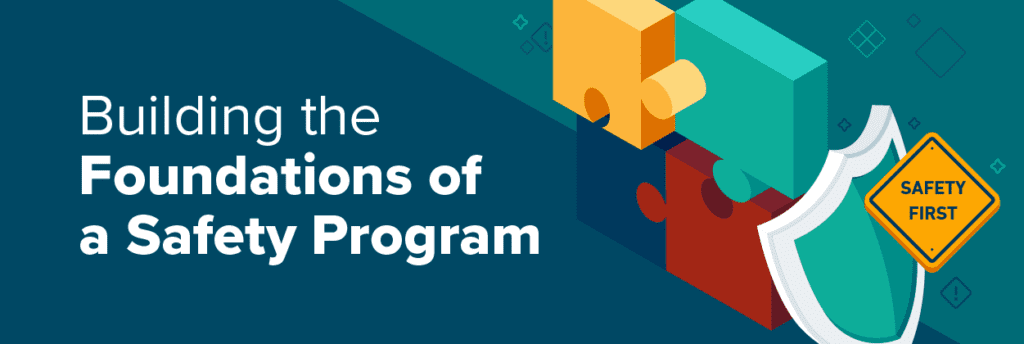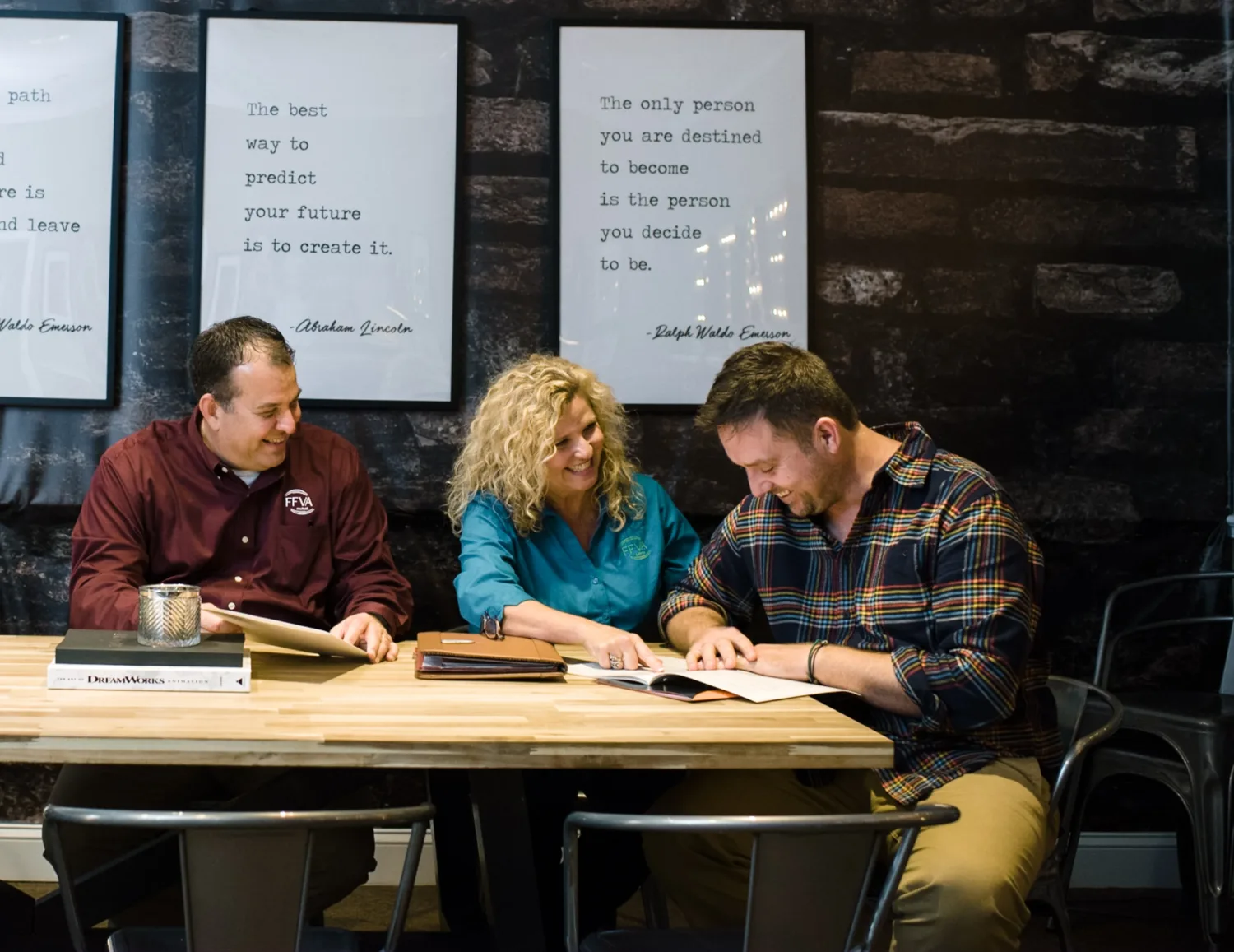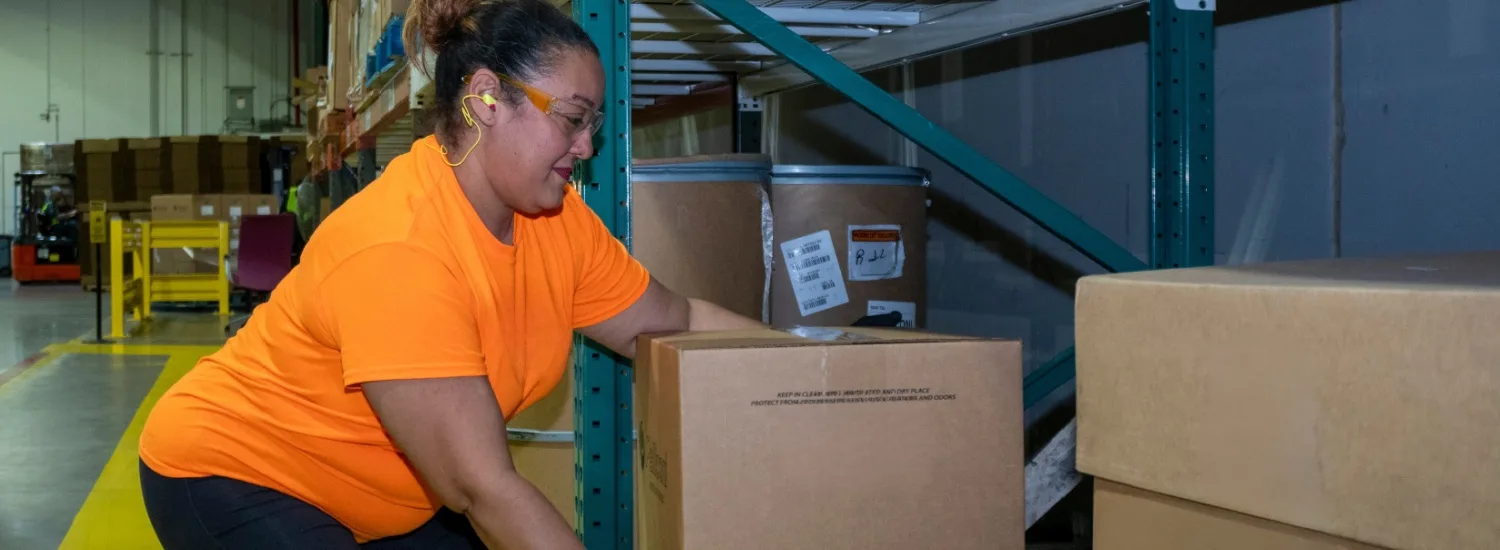Build and Grow your Safety Program
Workplace injuries cost employers a total of more than $170 billion every year according to the National Safety Council. The worst part? Most of those injuries could have been prevented if employers had invested time and effort to build an effective workplace safety program.
Let’s walk through the key components of a successful safety program to set you on the path to keeping your employees safe at work.

The basics of a safety program
A safety program is an employer’s collection of policies, procedures, and processes that are designed to keep employees safe on the job and ensure regulatory compliance with all federal, state and local Standards and agencies. Safety programs are fluid, meaning they should be routinely updated to reflect changing workplace circumstances. OSHA has provided a series of guidelines to help you design and implement an effective safety program.
OSHA is a good place to start when setting goals for your safety program. “A good way to prioritize goals is to look at OSHA’s Most Frequently Cited for that year,” said Karen Johnson, safety supervisor at FFVA Mutual, “and then prioritize them as they relate to your company and what’s most important to your company.”
Your employees are your most important asset, and it’s critical that you put the right policies in place to maximize workplace health and safety. If the worst does happen and someone gets hurt, your safety program should provide the right guidance for taking action — that means getting the injured worker the medical attention they need and then following the proper workers’ compensation processes.
3 key components of a safety program
The most effective safety programs are the ones that are tailored to the specific needs and requirements of your workplace. That said, there are a few key components that every safety program should include. These are:
- Management leadership: Workplace safety always starts with a commitment from management. Management must put safety at the top of its priority list and then do the hard work of setting safety goals, forming a safety committee, and setting aside resources for ongoing training and committee meetings. “Management would have to make sure that the safety committee has goals and objectives in implementing the safety program,” said Karen. “That means making sure that the people on the safety committee represent the company’s desired safety culture.”
- Worker participation: Involving employees in the formation of your safety program is key to maintaining a safe and healthy workplace. Not only do workers understand all the safety hazards on the job better than anyone, they also know the shortcuts that can be taken to get around safety guidelines. It’s important to include workers at every step of the safety program formation process, from setting goals to implementing procedures.
- Hazard identification: Prevention is the best way to enhance workplace safety. It’s important for employers to conduct a full inspection of their workplace to identify possible safety hazards and put remedial procedures in place right away. You should conduct job hazard analyses on a regular basis to ensure any new or emerging safety risks are identified and addressed immediately.
In addition to the above three components, it’s also important that employees undergo ongoing training sessions to make sure they’re up to date on all the latest safety procedures and understand their place in your safety program.
What makes a good program?
Safety is the basis of success at every organization, and it can have benefits for your business far beyond simply keeping workers out of harm’s way. But building a successful safety program takes time, effort and work. Here are three basic principles that make for a solid safety program:
- Prevents injuries: Most workplace injuries are preventable, so there’s a lot you can do to keep them from ever happening in the first place. A great safety program includes regular job hazard analyses, offers the right personal protection equipment, and offers wellness programs to ensure employees are happy and healthy.
- Communicates procedures: It doesn’t matter how good a program is if workers are left in the dark about expectations. Your program should provide clear and consistent communication so that employees know exactly how to stay safe while doing their jobs. In addition to ongoing meetings and regular announcements, it’s important to keep written versions of all processes, procedures and policies to make them easily accessible to employees.
- Creates a safety culture: Great safety programs always start from the top, but they don’t end there. It’s important that safety is embedded into every aspect of your organization and that employees always feel like they can communicate openly with management about safety protocols. A successful safety program depends on getting buy-in from everyone in your organization, and that means creating a culture that promotes the health, safety and happiness of all workers.
Even after you’ve built a successful safety program, it’s important to remember that workplace safety is an ongoing process.
According to Karen, “Ongoing management would include making sure audits of the program are conducted, keeping it updated as processes change, and supporting all elements of the program at management level.”
An effective program should continue meeting your safety goals and reflect any new safety hazards that arise.
5 Safety Foundation webcasts to enhance your safety program
At FFVA Mutual, we’ve put together a series of webcasts with impactful safety tips and resources to help you create and improve your workplace safety program.
Here’s a look at each of our 5 Safety Foundation webcasts now available to watch on Demand:
- Conducting safety audits and inspections: Keeping your program in tip-top shape requires routine audits and inspections. We’ll walk you through the steps to completing your audits successfully, including where to start, which policies need to be audited, and how to document your findings.
- Effective accident investigations: Many employers confuse accidents and incidents, and it’s not hard to see why. This module takes a look at what makes them different from one another. We’ll also walk you through the basic steps of carrying out an accident investigation, making sure to touch on the most common mistakes to avoid.
- Elements of an effective safety and health program: Effective safety and health programs require a lot of time, planning and collaboration. This module is designed to give employees the tools to identify and address hazards in their specific processes and job functions to prevent injuries from occurring.
- Elements of a company vehicle safety program: Motor vehicle accidents are among the most common causes of workplace injury — they’re also one of the most preventable. It’s important to take the time to train employees on common driving hazards, putting all protocols and policies in written form for easy access.
- Importance of a safety committee: The safety committee sits at the heart of your program. It’s where decisions are made, policies reviewed and safety procedures put into place. This webinar takes you through the basics of forming a safety committee and also provides some useful tips for improving your committee if it’s already in place.
Designing an effective safety program can be challenging. Luckily, you don’t have to do it alone. At FFVA Mutual, our safety services, expert team of safety consultants and no-cost safety training for policyholders gives employers and employees all the tools you need to keep workers safe on the job.






























